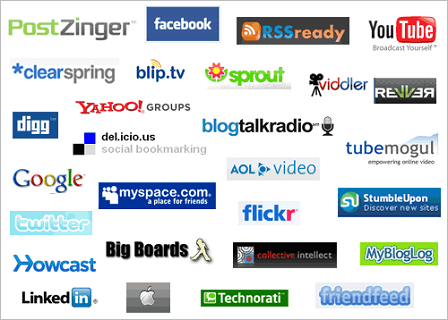 Sarah Santacroce is a certified social media, internet marketing, and virtual event specialist. She enjoys every aspect of small business marketing. Through her own business, Simplicity, it is her mission to help other small businesses and solopreneurs increase their visibility and use social media tools as part of their marketing strategy.
Sarah Santacroce is a certified social media, internet marketing, and virtual event specialist. She enjoys every aspect of small business marketing. Through her own business, Simplicity, it is her mission to help other small businesses and solopreneurs increase their visibility and use social media tools as part of their marketing strategy.
Sarah draws on 12 years of experience in Business Administration, in fields ranging from Employee Training to Public Relations at big and small companies. She became interested in Online Marketing and Social Media to promote her own business and after lots of research and numerous classes and webinars she is now offering that knowledge to other small- to mid-sized businesses who struggle to find their place on the web.
In this blog, Sarah draws on examples from her own blog to give knowitall.ch visitors a few tips for managing their own businesses.

By Sarah Santacroce at Simplicity
If you are a small business owner who has an e-mail list and sends out newsletters, tap yourself on the back. You are doing one thing right already ! Despite all the Social Media hype, E-Mail Marketing is still a very important marketing channel. There are a few mistakes that I see regularly in newsletters though, so I thought I’d write them down:
Lack of regularity – Small businesses sometimes think that they can just send out a newsletter once every six months and expect a good “opening rate” (number of people who actually open the e-mail). Sorry to disillusion you, but if I signed up to receive your newsletter 6 months ago and never hear from you again until half a year later, I probably won’t remember who you are and just delete your e-mail. So, continuity is key to build that trust with your readers. I would say one newsletter per month is the bare minimum.
Too much info – This is kind of related to point one. The same people who send out their news only once every 6 months expect me to read their 3 page long e-mail. Most likely they will loose me after the 2nd paragraph. So not a good technique either. I recently announced to my subscribers that I will increase the frequency of my news exactly for that reason. I have too much content, articles and tips to share with them and each newsletter gets too long ! Keep it short and to the point.

By Sarah Santacroce at Simplicity
…that was the question somebody asked me at a networking event last Thursday. Hmm, I had prepared my Elevator Pitch, but wasn’t quite ready to answer this complex question in 30 seconds ! Instead I said: “I can help you, give me a call and we’ll discuss it”. In order to prepare for that call, I thought I’d write a blog post and share it with my readers.
As most of you know, I’m not a professional Search Engine Optimizer, but I can share my tips and tricks with you, and I know that they work. Just Google “bilingual Virtual Assistant Switzerland” and have a look at the results.
So let’s start with first things first:
Submit your website and company info to website and local directories
It’s not the most interesting task, but there is no way around it. You will have to spend some time (or money if you have it outsourced) and submit your website to major website directories. The main one is the dmoz directory, which is free. Then there are thousands of other ones, some free some not, some general some industry specific. You can find them all here. All submissions take at least 4 weeks until they are confirmed. So you need an extra dose of patience …
I also recommend you submit your company info to local directories such as Google Places, Yelp, Yellow Pages etc, especially if you are a brick and mortar business. Research which ones are the most relevant in your area and submit your company info.

By Sarah Santacroce at Simplicity
Recently my friend Anna from 360 Entrepreneurship asked on her LinkedIn group: I wonder if anyone in the group knows what the rules are for using images that are not your own, on blog, Facebook etc… To keep us out of trouble.
It’s a very valid question, because we all know that a blog post looks nicer with a featured image and pictures are the most shared status update on Facebook.
Well, the answer is pretty straight forward: if you use an image which is not your own, it is considered theft ! If you don’t own the right to an image, you need permission in writing to use it. That can be an e-mail from the owner, or, if you download the image from a picture library, you have to agree to the “Terms of Use or License”.
So where can you get photos legally ?

By Sarah Santacroce at Simplicity
If you are a personal or business coach, you might be aware that your competition is slowly but surely getting the idea of Social Media and while you are still hesitating, they are building their “tribe”, engaging with their potential clients as we speak.
So I thought I’d write a post for you to encourage you and take that first step into the world of Social Media.
Facebook: Some coaches decide to use their personal profile on Facebook also for their business. I recommend you don’t. I recommend you get a professional page, or “Fanpage”. You can do much more with a page, in terms of marketing and you will also not have to worry about privacy issues. You only post business info, or personal info that you want to share with your business contacts. Go claim your page right now !If you have already started using your personal profile for business, just be very careful with what you are posting.

By Sarah Santacroce at Simplicity
If you run a business website and check your Google Analytics regularly, you might know that the “Contact us” page is one of the most frequently visited pages of your site (after the home page, the about page and the resource page). So you want to make sure that you give the visitor all the necessary information he/she needs.
To do that, first let’s analyze why people visit the “Contact us” page:
- they want to call you
- they want to e-mail you
- they want to find out where you are located (which country)
- they are looking for a name of one of your employees
- they need your address to write you an invoice
- they want to see how to find you (map)
- they want to see your Social Media profiles
- they want to know who runs the website/company










